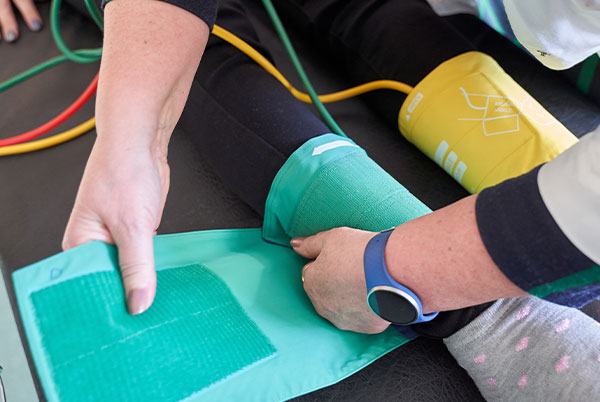Peripheral Vascular Disease (PVD), also known as peripheral arterial disease (PAD) or peripheral artery occlusive disease (PAOD), is an ailment which refers to a condition where large arteries not within the heart or brain become obstructed. This condition causes a lack of blood supply to the affected areas which in turn causes those limbs to experience a number of different symptoms. Symptoms of PVD include pain or weakness in the muscles, wounds or ulcers that heal slowly, diminished hair and nail growth on the affected limb/digits and a noticeable change in color/temperature on the affected limb when compared to other limbs. While this disease can affect all of the limbs, it most commonly occurs in the legs and feet.
Peripheral Vascular Disease can be caused by a number of different factors. Those who smoke run the risk of developing PVD due to the effect of tobacco on the blood vessel lining. Diabetes is another cause of PVD thanks to the cell dysfunction caused by the disease. Another cause of PVD occurs when people have either high blood pressure or high LDL cholesterol count. Any combination of the above factors increases the chances that a patient will develop peripheral vascular disease by a great deal.
As far as treatment of PVD goes, most of it lies with getting one’s body back into better shape. First off, smokers should work to cease smoking to take that factor out of the occasion. Those with diabetes must make sure to manage their disease as well as they can. Those with high cholesterol and/or high blood pressure should work to bring these levels more under control with changes to diet and exercise. For all of the above patients, a regular exercise schedule should be introduced into their lives which will help to open up their arteries and allow regular blood flow once more. In extreme cases, a vascular or endovascular surgeon may have to operate to solve the issue.
Peripheral vascular disease is a very serious condition that should not be taken lightly. With or without treatment, those with PVD have an increased risk of having a cardiovascular or cerebrovascular event. There is also a risk that some patients will require amputation of the affected limbs due to PVD. If one suspects that they have this disease, they should contact a health professional immediately and discuss their options for treatment.


